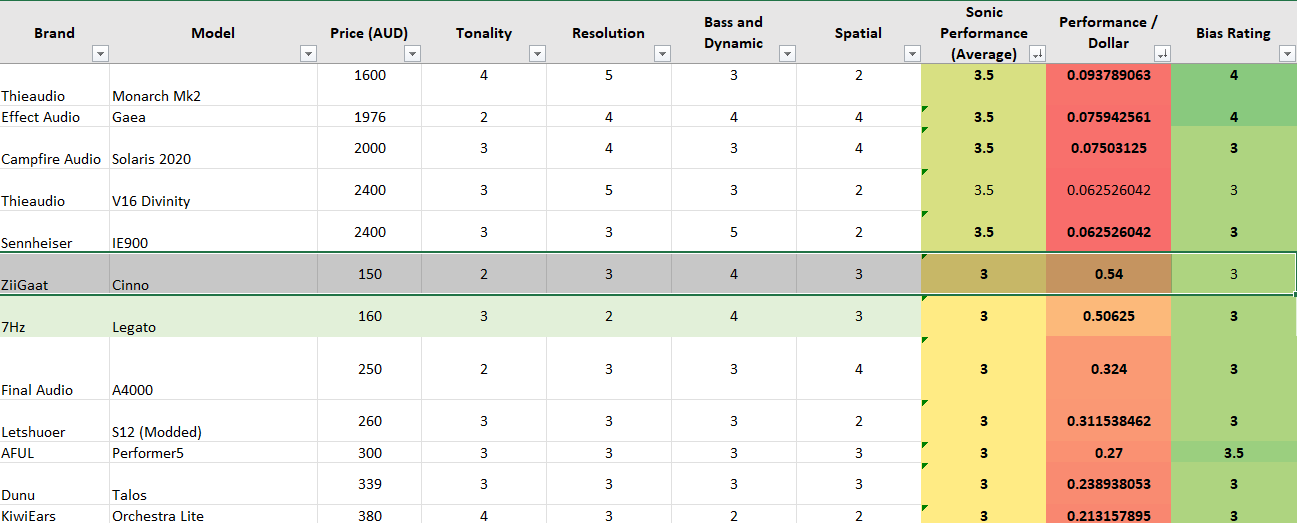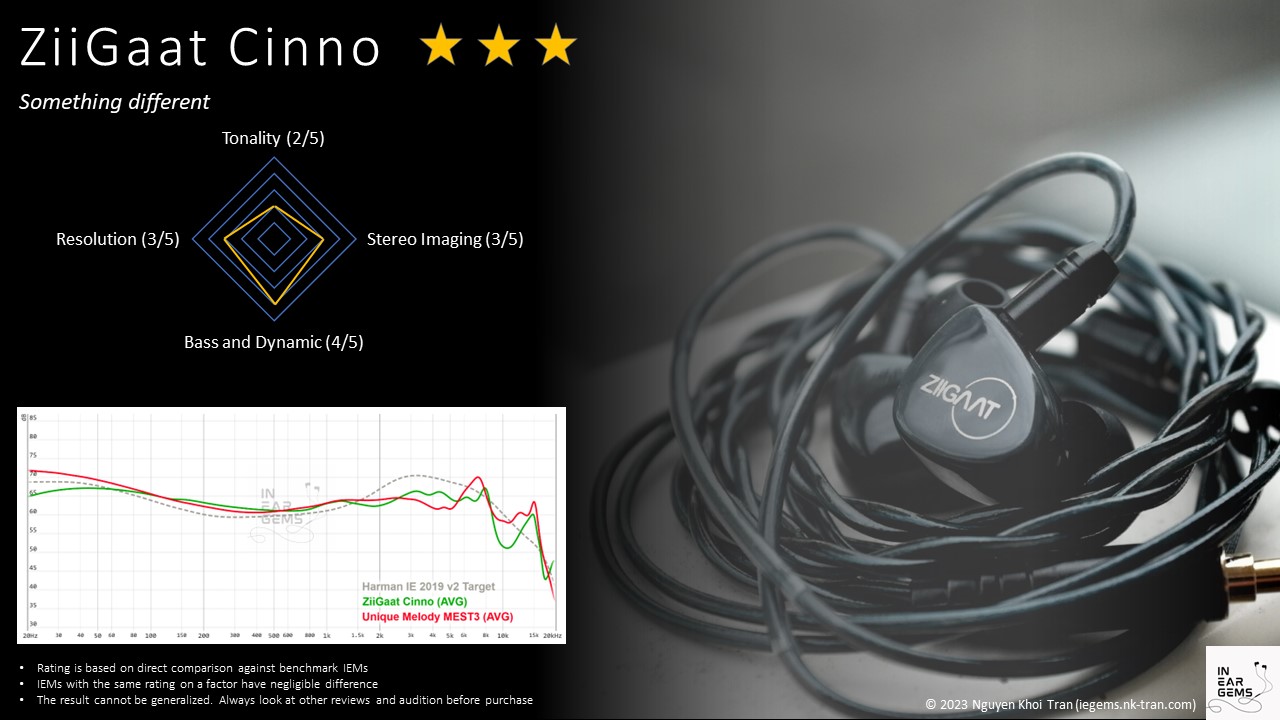ZiiGaat Cinno - Something different
ZiiGaat is yet another newcomer to the increasingly competitive IEM market. So, who are they? According to their story:
”WHILE THE WORLD ENJOYED HIGH-END AUDIO QUALITY, THERE HAS BEEN A SILENT TEAM BEHIND MANY OF TODAY’S MOST POPULAR AND PRAISED AUDIO DEVICES. ZIIGAAT HAS BEEN DEVELOPING OEM AND ODM PRODUCTS FOR NUMEROUS GLOBAL AUDIO BRANDS FOR OVER A DECADE. … We aim to be more than just an audio brand; we seek to be a tech team that can work closely with the audio community to make better products for all of us. Each ZiiGaat member is passionate for music and best-in-class audio resolution, and we are on a mission to help people rediscover their music like never before.”
Maybe I’m easily convinced because the story of ZiiGaat struck a chord with me and created an intense anticipation of hearing their sound. I love the idea of a strong team with the necessary passion and skills to realise the ideal IEMs we audio geeks have undoubtedly dreamed of. But you know what they say: “A man is judged by his deeds, not words.”
Today, we will look at Cinno, a 5-driver hybrid IEM from ZiiGaat, to answer the burning question: is it any good?
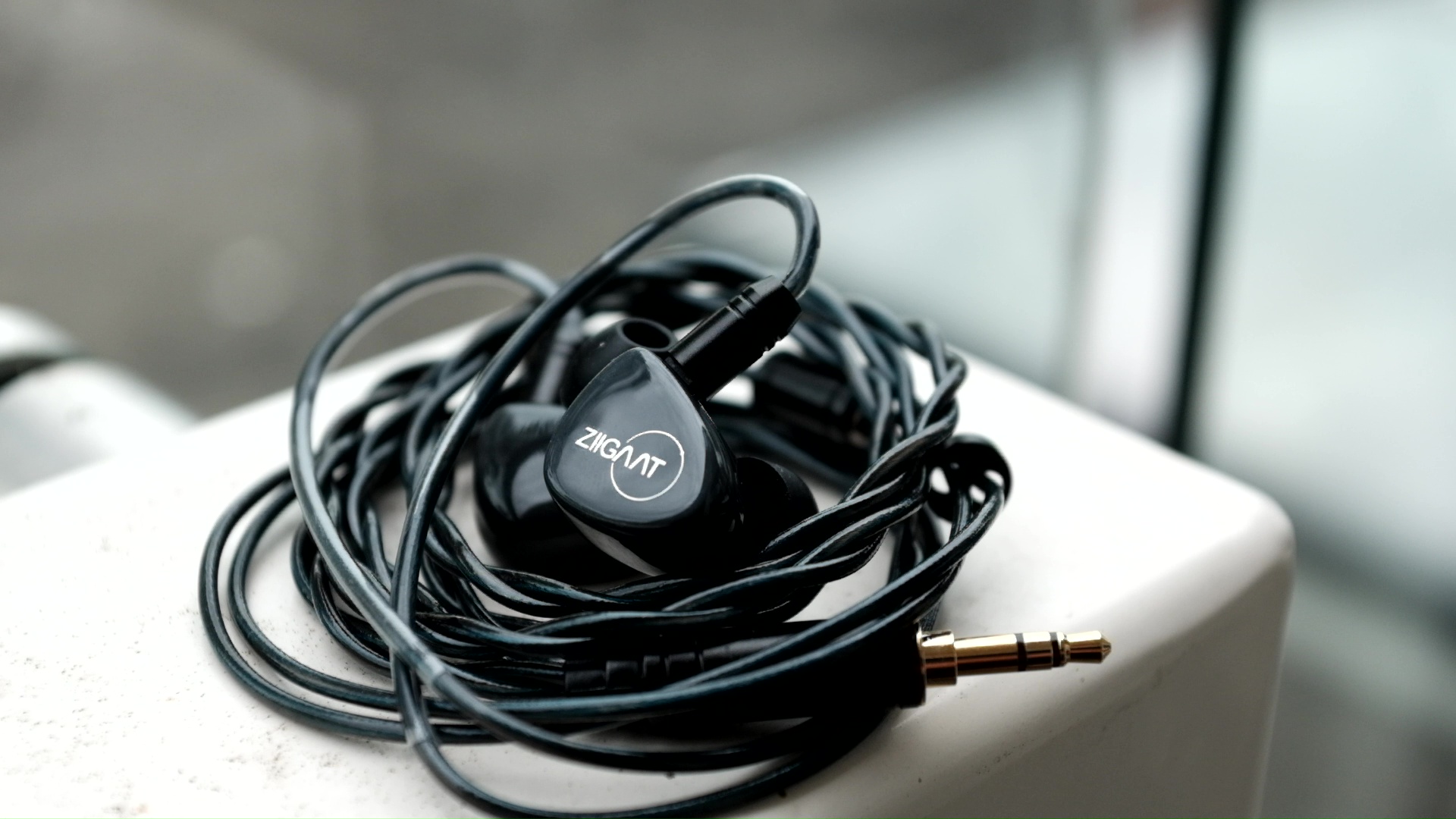
Forewords
- What I look for in an IEM is immersion. I want to feel the orchestra around me, track individual instruments, and hear all of their textures and details. I’m not picky about tonality, as long as it does not get in the way of immersion.
- I rate IEMs within with a consistent scale from 1 (poor) to 3 (Adequate) to 5 (outstanding). Ratings are assigned by A/B tests against benchmark IEMs, regardless of the retail price.
- Ranking list and measurement database are on my IEM review blog.
- Terms used in my reviews are consistent with the glossary by Headphonesty
- This review is based on a review sample from Linsoul (Thank you!). I have no affiliation with or financial interest in Linsoul or ZiiGaat.
- The unit retails for $99 at the time this review was published. Unaffiliated link
Testing setup: Local FLAC files -> iBasso DX300 (stock player app) -> stock cable (3.5mm) -> IEM -> stock ear tips
Accessories and Packaging
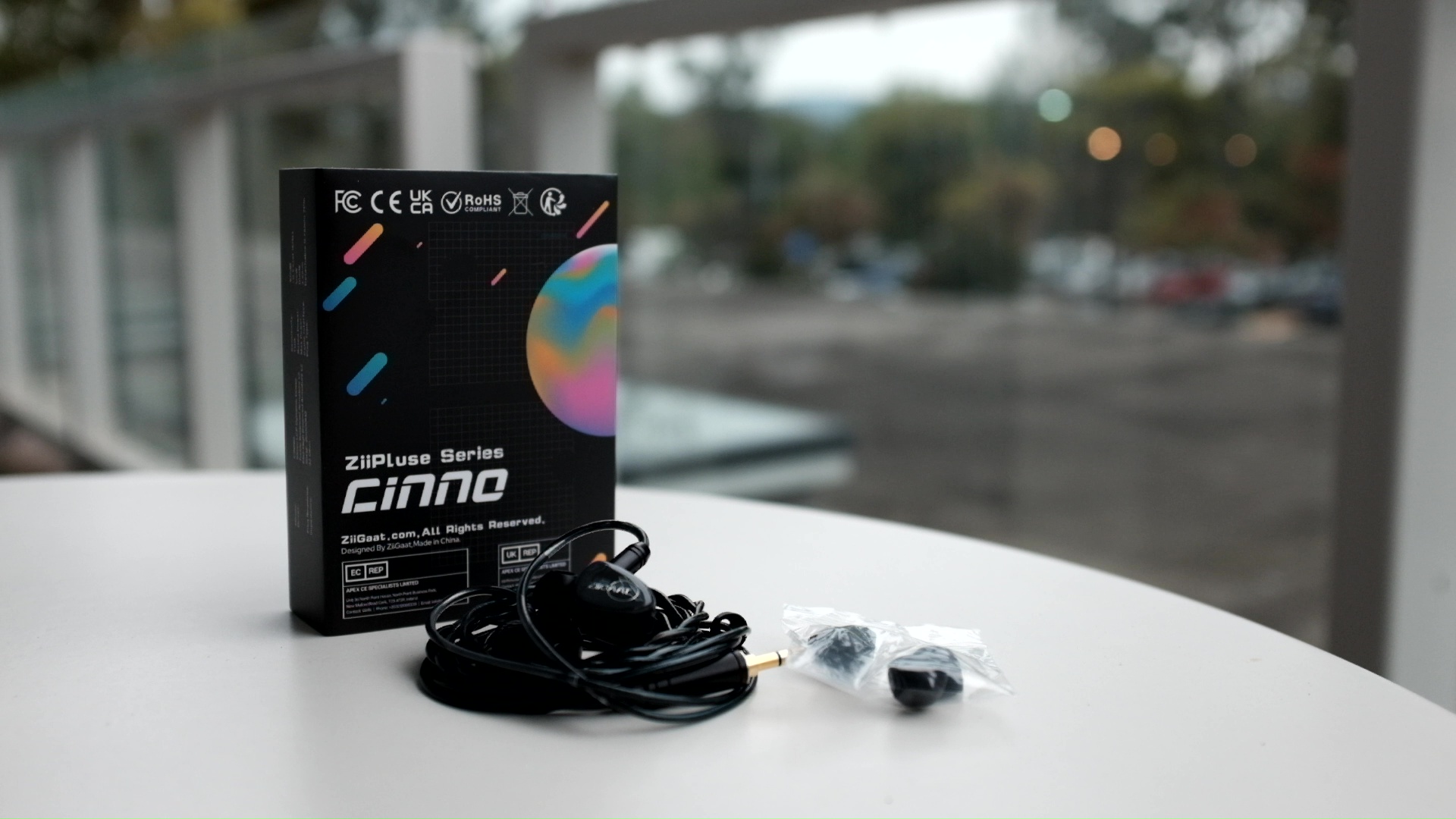
Very sparse for a $99 IEM. You have the earpieces themselves, a cable, and one type of ear tips. Subjective Experience ===
As usual, our discussion of subjective experience starts with fit and comfort. As I mentioned above, Cinno is surprisingly tiny, to the point I find it hard to believe that there are 5 drivers inside these small earpieces. The earpieces are made of very light plastic with a glossy finish and no sharp edge. The nozzles are on the shorter side with medium width. They pair well with the provided ear tips, which are slightly longer than average. The stock cable is also light, though not tangly or flimsy. As a result, Cinno aces the fit and comfort.
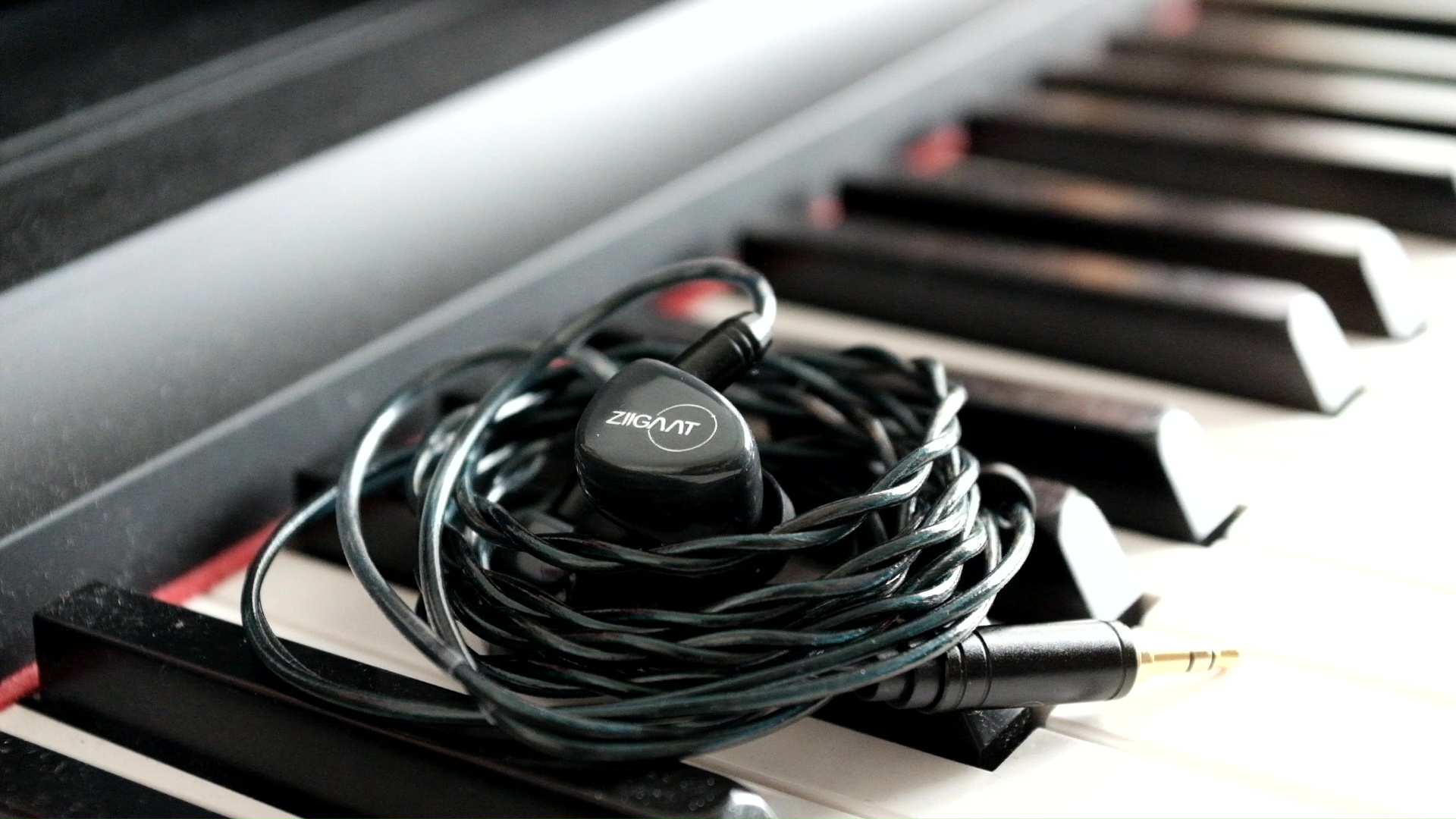
How do they actually sound?
The overall theme of Cinno’s sonic performance can be considered “different.” With Cinno, ZiiGaat opted for a tonal balance utterly different from most of the new releases from the Eastern IEM market, allowing this IEM to present the music uniquely. On the plus side, this unique presentation can provide you something fresh and new in a market increasingly dominated by Harman-inspired and diffuse field sound signatures. On the other hand, you might never get used to the unique presentation of Cinno, rendering this IEM unusable for your library.
The sound signature of Cinno is defined by two characteristics: the absence of the usual upper midrange boost (also known as ear gain compensation) and the robust bass response. Superficially, the tonal balance of Cinno somewhat reminds me of another interestingly-tuned IEM, the Unique Melody MEST MkIII. This resemblance exerts some influence over the shape and structure of Cinno’s soundstage.

The absence of an upper midrange boost has two effects. Firstly, it helps Cinno create a convincing illusion of distant and forward projection of the stereo image. For example, when I listened to the “Gladiator Suite” in the album LIVE by Hans Zimmer, Cinno does a great job at pushing the cheers of the audience and the background strings in the first 30 seconds further in the background, as if they come from somewhere further away, outside the head stage. I particularly enjoy how Cinno places instruments at the front-left and front-right positions. The only issue holding Cinno back is that the instruments’ positioning (left-to-right) and layering (near-to-far) lack precision and focus.
The other effect of the upper midrange absence is less optimistic, however. Simply put, Cinno usually creates the impression that the midrange is too diffused and lacks focus. This impression is particularly noticeable when listening to music that requires presence and brilliance, such as the Mendelssohn Violin Concerto by James Ehnes. I kept feeling that a certain level of “shine” and “edge” was missing from the soloist’s violin, forcing me to turn up the volume. However, the rest of the orchestra quickly becomes too loud, forcing me to pull the volume down. This constant push-and-pull was infuriating sometimes.

The same situation happens with vocal-only music such as Bohemian Rhapsody by Pentatonix. On the plus side, there was no harshness, shoutiness, or sibilance. On the other hand, voices can sound infuriatingly dull sometimes.
Let’s end the subjective impressions positively: Cinno’s bass performance. The best keyword to describe the bass of Cinno is “tight.” Because of the upper midrange’s absence, Cinno’s gently boosted bass stands out more. Percussion hits have a sharp leading edge, decent impact and decay. For instance, when I listened to “Backside of The TV” and “Signs of Love” from the soundtracks of Persona 4, I found the basslines to be toe-tapping due to how snappy, tight, and clean they sound.
Frequency Response Analysis
Frequency response of Cinno against the Harman in-ear target and Unique Melody MEST III. Measurements were done with an IEC-711-compliant coupler and might only be compared with other measurements from this same coupler. Visit my graph database for more comparisons.
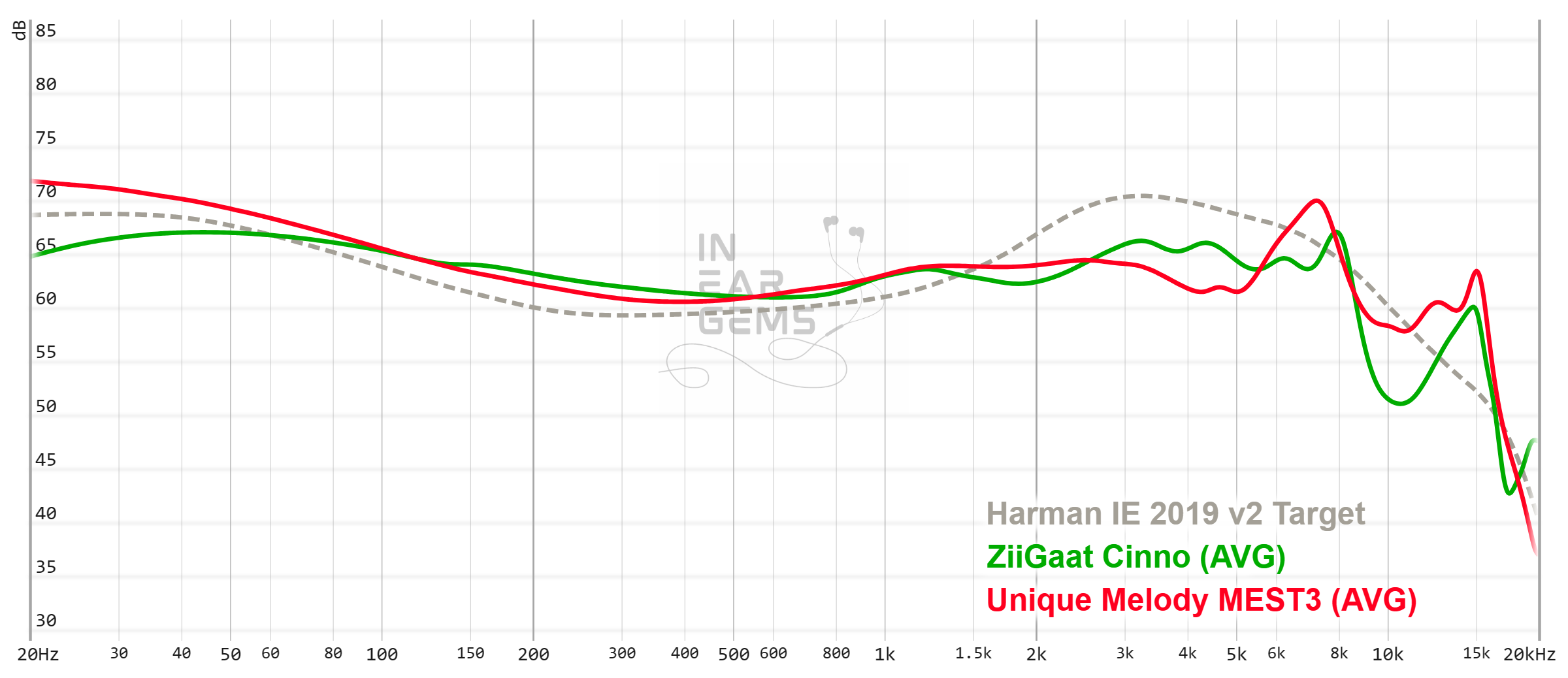
It is helpful to think of an IEM as a filter that highlights or subdues different parts of the incoming audio signal. This effect can be measured objectively by the squiggly lines above, called Frequency Response (FR) graphs, which measure how loud an IEM is at different frequencies from 20Hz (bass) to 20kHz (upper treble). Subjectivity is how your ears and brain interpret the effect of that filter on your music and decide whether it is “enjoyable.” There are some “rules of thumb” when it comes to tonality, but most interesting IEMs usually bend the rules masterfully.
As mentioned, Cinno’s signature is defined by the absence of an upper midrange and a gently boosted bass. Interestingly, the 2kHz region is actively suppressed after an early gain at 1kHz. Still, I’m not convinced by ZiiGaat’s tuning choice in this upper midrange region.
I also think that ZiiGaat could have boosted the 5kHz to 8kHz region a few dB extra to compensate for the subdued upper midrange. Without the upper midrange, the tonality of an IEM would likely always be coloured and somewhat unnatural, but adding a bit of treble “bite” might remove that infuriating dullness that I mentioned above.
Resolution

Resolution is a fascinating subject due to the difficulty of pinning down what it really is. To me, “resolution” can be broken down into three components: (1) Sharpness, incisiveness, or “definition” of note attacks (see the figure above). (2) The separation of instruments and vocals, especially when they overlap on the soundstage. (3) The texture and details in the decay side of the notes. The first two give music clarity and make it easy to track individual elements of a mix. The last provides music details and nuances. Smooth and well extended treble response plays a crucial role.
If you have followed along until this point of the review, you might guess that Cinno does relatively poorly regarding resolution. Interestingly, that’s not the case. I would say that Cinno is deceptively resolving.
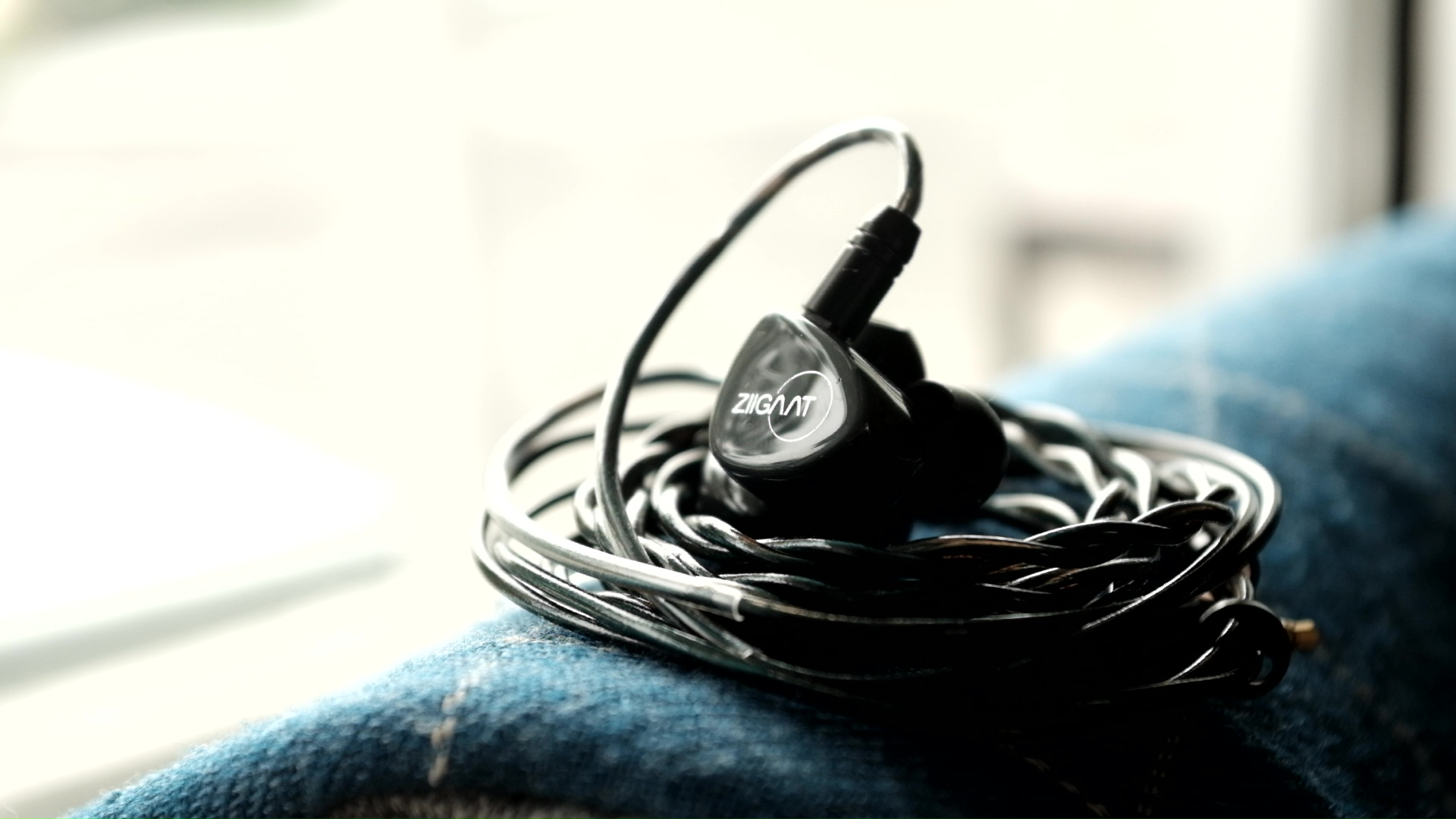
As an example, let’s listen to “I’ll Face Myself” from the Persona 4 soundtrack album and compare Cinno to the venerable Moondrop Blessing 2, my benchmark for “good” resolution (3/5). When I swapped from Cinno to Blessing 2 the first time, I breathed a sigh of relief because that upper midrange presence I craved finally returned. However, after my ears (and expectations) had been adjusted to the tonal balance, I was surprised to find that Cinno could define and separate instruments in the mix as well as the brighter Blessing 2. In fact, I was able to pick out more details across the spectrum, especially in the lower frequencies, with Cinno. It’s hard to say whether Cinno is strictly more resolving than Blessing 2 or the extra details are a side effect of the tonal balance. Still, I would place the resolution of Cinno in the same bracket as Blessing 2 - Good.
Soundstage Imaging

Stereo imaging or “soundstage” is a psychoacoustic illusion that different recording elements appear at various locations inside and around your head. Your brain creates based on the cues in the recording, which are enhanced or diminushed by your IEMs, your DAC, and your amplifier. Some IEMs present a wide but flat soundstage. Some present a “3D” soundstage with layering, depth, and height. In rare cases, with some specific songs, some IEMs can trick you into thinking that the sound comes from the environment (a.k.a., “holographic”)
The soundstage of Cinno is challenging to assess. On the one hand, due to the unique tonal balance, Cinno can present a more intriguing soundstage than the usual Harman-ish IEMs, especially regarding the distant background sounds in the mixes. On the other hand, the instrument placement and layering of Cinno lack the precision and focus to make the most of that unique soundstage structure. Overall, I would consider Cinno’s soundstage imaging “good.”
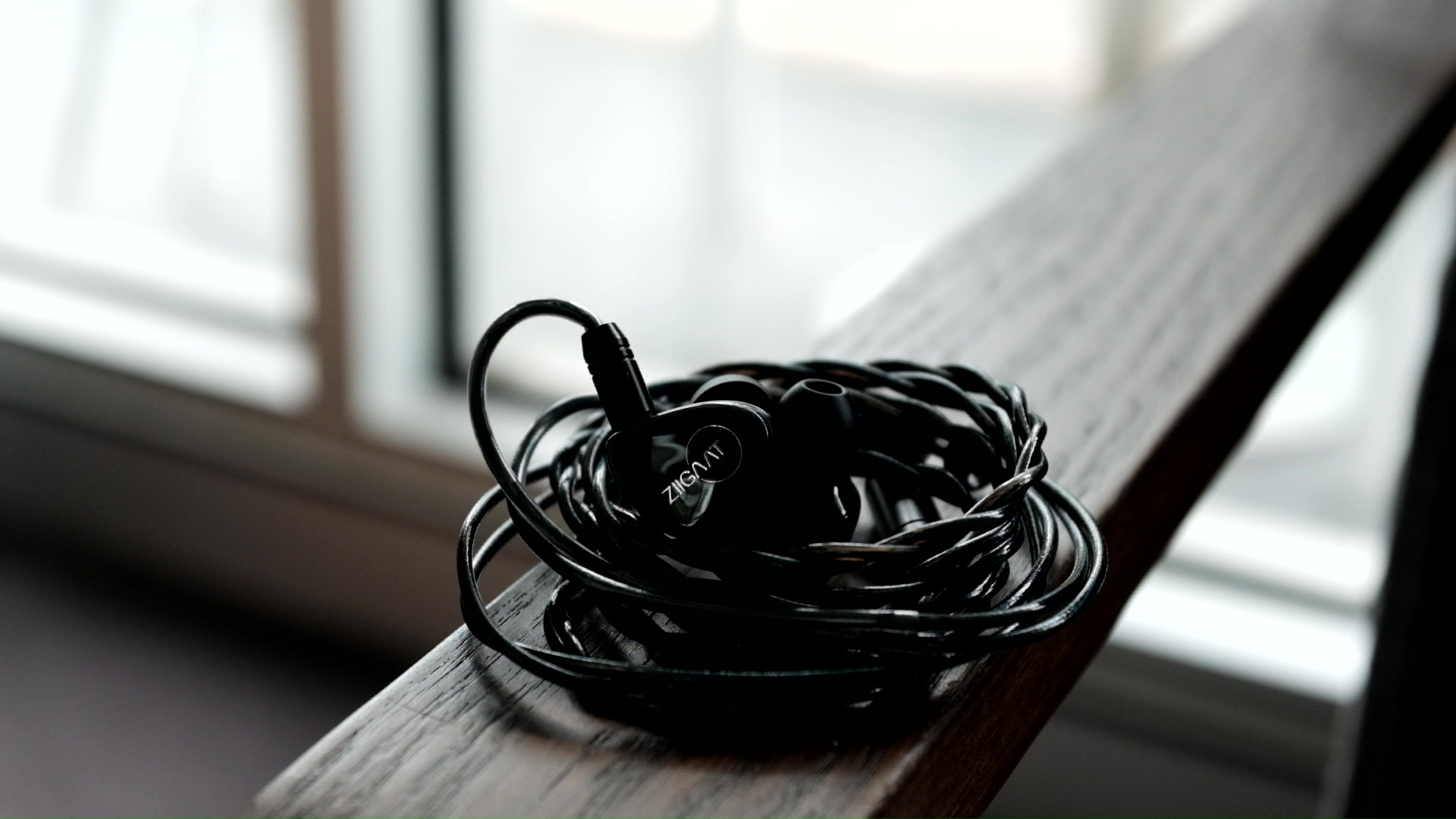
Soundstage imaging with games (CS GO Gameplay by Throneful) Cinno does a surprisingly good job in FPS games. The subdued upper midrange brings about two advantages. Firstly, gunshots and footsteps are a bit more distant, even out-of-head most of the time. Because everything is more spread out, it is easier to pinpoint and track the location of sounds. Secondly, the more subdued upper midrange softens the sound of gunshots, making it easier on the ears.
Comparisons

Simgot EM6L:
- EM6L and Cinno are polar opposite in terms of tonal balance and soundstage presentation.
- EM6L is focused, near, and centered. Cinno is diffused and more spread out.
- Both IEMs have tiny earpieces that offer great comfort.
Rating and Conclusion
ZiiGaat Cinno is an interesting IEM with a unique tonal balance. As with many unique things in the world, Cinno is divisive. In fact, I also find myself conflicted about this IEM. On the one hand, in certain tracks, I find the absence of an upper midrange unacceptable, if not infuriating and irritating. On the other hand, the soundstage is always more interesting than usual due to the unique tuning. An unexpected benefit of this tuning is how well it plays background music for daily activities. The subdued upper midrange allows the IEM to “fade away” and avoid disrupting my concentration.
So, Should you consider Cinno? Yes, but only if you are branching out to try something different and accept the risk of doing so.
Absolute Sonic Quality Rating: 3/5 (Tonality: 2/5; Resolution: 3/5; Spatial: 3/5; Bass and Dynamic: 4/5)
Bias Score: 3/5 (I’m lukewarm about this IEM)
Value Proposition: Top of the 3/5 class. Above average across my dataset.
